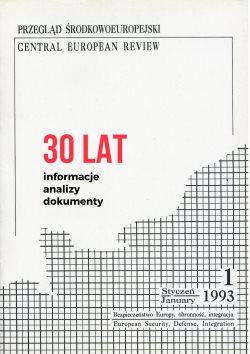Ukraine’s recent gains highlight the unpredictability of Russia’s war. The main challenge for Western governments, NATO, and the EU is to act in unison while adjusting to the evolving military dynamics.
The offensive came as a surprise to Russia’s armed forces. The Russian troops stationed in the territory that had been occupied shortly after the beginning of the large-scale invasion at the end of February 2022, seem to have retreated quickly and in an unorderly fashion. The nature of the retreat provides a glimpse into weak leadership structures within the Russian army and its overall low morale.
By contrast, reestablishing control over parts of the occupied territory further boosts the Ukrainian army’s and society’s will to fight at a critical stage in the war. Regaining such a large chunk of territory marks a departure from the war dynamics in the wider Donbas area over the summer, which were characterized by small troop movements and Russia’s slow advance to the administrative centers of the region.
The long-announced Ukrainian counter-offensive in the Kherson area in Ukraine’s south has progressed much more slowly than the one near Kharkiv. Both demonstrate the continued will and capability of Ukraine’s military to defend the country. Moreover, both advances show that Western weapons deliveries and training make a difference and need to be upheld and updated in light of Ukraine’s needs.
The offensive near Kharkiv, which Russia counters with attacks on local power stations in an attempt to demoralize and demobilize the Ukrainian population, also allows for a realistic assessment of the prospects of a ceasefire or even peace negotiations. In Germany especially, calls for ceasefire negotiations and for “freezing” the war have gained in space and appeal, not least in view of the rising energy costs and inflationary pressure expected to trigger a domestic political backlash against sanctions and support for Ukraine in the autumn.
It is a truism that wars end with negotiations. Restating this, however, does not change the overall dynamics of the war. The Ukrainian offensive underlines that Kyiv needs to be in a much stronger position before negotiations can begin. Otherwise they simply amount to an interval during which Russian forces can regroup and wait for the next opportune moment to attack.
Taking the statements by Russian President Vladimir Putin, his press secretary Dmitri Peskov, and Foreign Minister Sergei Lavrov together, it is obvious that the Kremlin does not see any necessity to negotiate, even after the latest offensive. Lavrov used the deliberately vague wording that negotiations are always possible, but Putin’s reaction made clear that his goals have only widened since the start of the war and that the destruction of Ukraine as an independent state and nation remains the main objective.
By now, Russia explicitly names the West as a target in this war beyond Ukraine and threatens to completely cut energy supplies to EU member states. Putin pursues his familiar strategy of trying to split the EU or NATO by focusing on diverging interests within the institutions.
Small cracks have appeared in the Russian political system. They are not sufficient to change the political calculations related to the war. At the same time, one should not forget that authoritarianism can look stable for a long time until all of a sudden—for example in the context of a succession crisis or in response to a major domestic or international crisis—change occurs.
This change, however, does not only come in the form of democratization. Based on repression, pervasive state propaganda, and a loyalty-based relationships among the political, security, and economic elites, the Russian political system has become even more autocratic in recent months. It is noteworthy that local politicians in St. Petersburg and Moscow are currently calling for a trial of Putin on grounds of high treason or demand his resignation. For now, these attempts at holding Putin politically accountable are bound to fail in the highly controlled political environment on display during the regional and local elections last weekend. Nevertheless, it is remarkable that these initiatives have emerged at all.
The most recent events show how dynamic and, therefore, ultimately unpredictable this war still is. With its multiple fronts developing differently and at varying speeds, it is currently hard for anyone involved or observing from the outside to paint an overarching picture. The simultaneous fighting on several fronts makes both sudden advances but also stalemate and logistical problems more likely.
The war seems set to last for a long time. The main challenge for individual Western governments, NATO, and the EU as a whole is to act in unison, while also remaining flexible to adjust to the evolving war dynamics. This requires long-term strategic planning and a more explicitly communicated commitment to supporting Ukraine, including the continued delivery of heavy weapons.
Gwendolyn Sasse is a nonresident senior fellow at Carnegie Europe and director of the Centre for East European and International Studies (ZOiS) in Berlin.
Source: Strategic Europe, Sept 13. 2022
